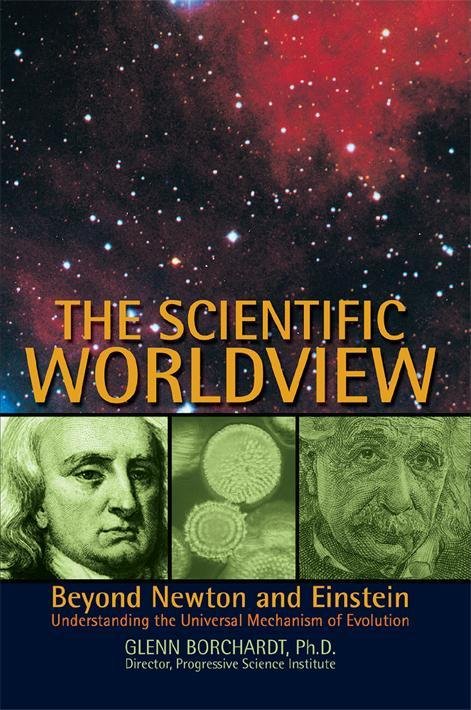PSI Blog 20191223 Dumb
regressive physics question of the day: The universe tends towards disorder.
But how come nobody knows why?
Credit: Domenic
Bahmann
The universe tends towards disorder. But how come nobody knows why?
Entropy is the
physicist’s magic word, invoked to answer to some of the biggest questions in
cosmology. Yet a quantum rethink may be needed to tell us what it actually is
Read
more:
Astute readers
should get a kick out of this one. I answered that question back in 1980 when I
submitted my paper on it to Science magazine. After the inevitable rejection, it
became the Sixth Assumption of Science, complementarity (All
things are subject to divergence and convergence from other things) in The
Scientific Worldview[1]
and was published as a separate paper in 2008 as “Resolution of the SLT-order
paradox.”[2]
The fact this
question is still being asked in a major scientific news magazine 40 years later,
teaches us two valuable lessons:
1.) Despite the observation there are over 2
trillion galaxies, cosmogonists and regressive physicists still assume the
universe is finite.
2.) The
blockade against progressive physics and the Eighth Assumption of Science, infinity
(The universe is infinite, both in the microcosmic and macrocosmic directions)
has been unrelenting. Physics and cosmology are the worse for it. The dumb questions keep rolling in...
As I pointed out
in the above references, once you assume infinity, the answer to that dumb
question is obvious: Each portion of the infinite universe is produced by the
coming together of other things (an increase in negentropy) and thereafter is
subject to coming apart (an in increase in entropy).
The erroneous statement
in the title of Michael Brook’s New Scientist article is otherwise known as “the
heat death of the universe.” Anyone who makes such a statement is assuming finity, as required in the current
cosmogony, the Big Bang Theory, and in the rest of regressive physics.
The simple
explanation of the Second Law of Thermodynamics (SLT) goes like this: Any
isolated part of the universe will lose matter and/or motion to its
environment. For instance, you can bring materials together to build a house (convergence),
but if left isolated (i.e., without maintenance) that structure eventually will
come apart (divergence). Now, this is little more than a reiteration of Newton’s
First Law of Motion: A body in motion stays in motion. Each portion of the infinite
universe, including all the parts of that house, are always in motion. Since
perfect isolation is impossible, the constituents and/or their motions in that
house eventually will be emitted to its environment.
So, what happens
to those constituents in an infinite universe? They just go somewhere else. The
divergence in one place just becomes convergence in another place. That’s why I
call the Sixth Assumption “complementarity.” You can see examples of this at
every turn. For every plant or animal that is growing (matter coming together),
another is dying (matter coming apart). That’s why infinity resolves the
SLT-order paradox: If the SLT describes destruction, how come there is
construction all around us? As with all paradoxes, that one arises because it
is founded on an erroneous assumption. In this case, it is finity.
Treating the
entire universe as a finite, isolated object, as cosmogonists do, logically
leads, not only to a beginning, but also to an end for the universe. The “heat
death” part of the regressive assertion implies “energy” invariably is lost due
to the inevitable leakage from what are admittedly not “isolated” systems. As I
explained in the neomechanics section of “Infinite Universe Theory,” “energy”
is simply a calculation. It neither exists nor occurs; it is neither matter nor
motion, but a description of the motion of matter. Above all, energy is not
some ghostly matterless motion that escapes into the imagined perfectly empty
space surrounding the regressive’s isolated system.
Of course, the mystification
of energy is crucial for the regressive treatment of matter in motion. It is
why the Fifth Assumption of Science, conservation (Matter and the
motion of matter can be neither created nor destroyed) is stated improperly by regressives as “Energy can be neither
created nor destroyed” in the First Law of Thermodynamics. It is done that way
because the carrier for electro-magnetic motion is aether. All motion requires
a material carrier for its transfer from one part of the universe to another
per inseparability, the Fourth Assumption of Science. The “heat”
regressives require for the heat death claim cannot even leave its assumed finite
universe without it being surrounded by aether, its essential material carrier.
In lieu of that, regressives must treat the motion emitted by all things as
truly magical.
In
the Brook’s article there is much speculation about the scientific reason for
the “arrow of time.” This problem is also solved by infinity, which is consupponible
with the Seventh Assumption of Science, irreversibility (All
processes are irreversible). All portions of the infinite universe are in motion
with respect to each other. There is no way for any of those portions and their
environments to converge or diverge from each other twice in the same way. In other
words, time travel has been and will continue to be impossible forever.
[1] Review manuscript:
Borchardt, Glenn, 1984, The scientific worldview: Berkeley, California,
Progressive Science Institute, 343 p. [http://doi.org/10.13140/RG.2.2.16123.52006].
Published version: Borchardt,
Glenn, 2007, The Scientific Worldview: Beyond Newton and Einstein: Lincoln, NE,
iUniverse, 411 p. [http://www.scientificphilosophy.com/].
[2] Borchardt, Glenn, 2008, Resolution of the SLT-order paradox,
Proceedings of the Natural Philosophy Alliance: Albuquerque, NM, v. 5
[10.13140/RG.2.1.1413.7768].











No comments:
Post a Comment